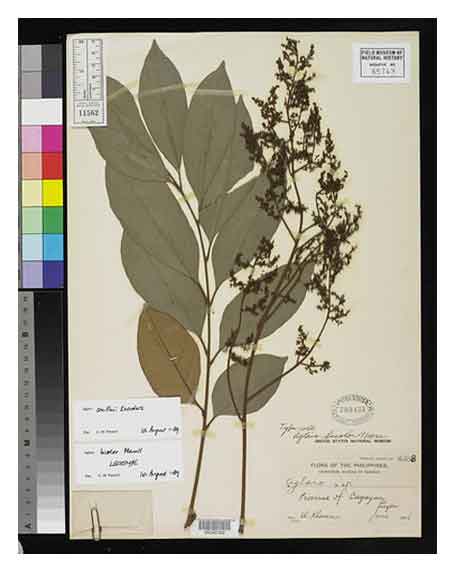
Family • Meliaceae
Batukanag
Aglaia smithii Koord.
| Scientific names | Common names |
| Aglaia badia Merr. | Batukanag (Ilk.) |
| Aglaia bicolor Merr. | Masaleng (Negrito) |
| Aglaia ramosii Quisumb. | |
| Aglaia smithii Koord. | |
| Aglaia smithii Koord. is accepted. KEW: Plants of the World Online. | |
| Other vernacular names |
| INDONESIA: Monjowojan (Sulawesi), Alawe (Moluccas), Duren (Irian Jaya). |
Botany Tree up to 10 m. Leaves 27–47 cm long; petiole 6–8 cm long, petiole, rachis and petiolules densely covered with scales like those on the twigs. Inflorescences in the axils of several leaves near the apex of the shoot, up to 28 cm long; peduncle c. 6 cm, peduncle, rachis and branches densely covered with scales like those on the twigs. Flowers c. 2.5 mm long and 3.5 mm wide; pedicels c. 3 mm, the pedicels and calyx densely covered with orange-brown scales which have a paler margin. Petals 5. Staminal tube c. 2 mm long and 3 mm wide, the aperture with 10 triangular lobes which have stellate yellow hairs on their margins; anthers 5, c. 0.7 mm long and 0.4 mm wide, inserted below the margin, with yellow stellate hairs, the staminal tube thickened below and between the anthers. Unripe fruits c. 1 cm long, obovoid, with numerous bumps and densely covered with scales on the outer surface. (6) Distribution Constituents Properties Studies Availability |
November 2022
![]()
 |
| PHOTOS / ILLUSTRATIONS |
| IMAGE SOURCE: Aglaia smithii (A. bicolor LT) US3345102 / by filibot.web / flickr / |
Additional
Sources and Suggested Readings |
• |
DOI: It is not uncommon for links on studies/sources to change. Copying and pasting the information on the search window or using the DOI (if available) will often redirect to the new link page. (Citing and Using a (DOI) Digital Object Identifier) |
| List of Understudied Philippine Medicinal Plants |
• |
 |

 Gen info
Gen info